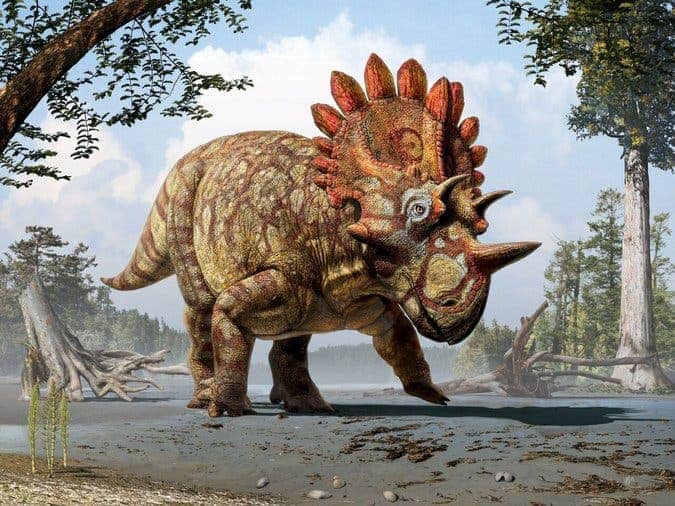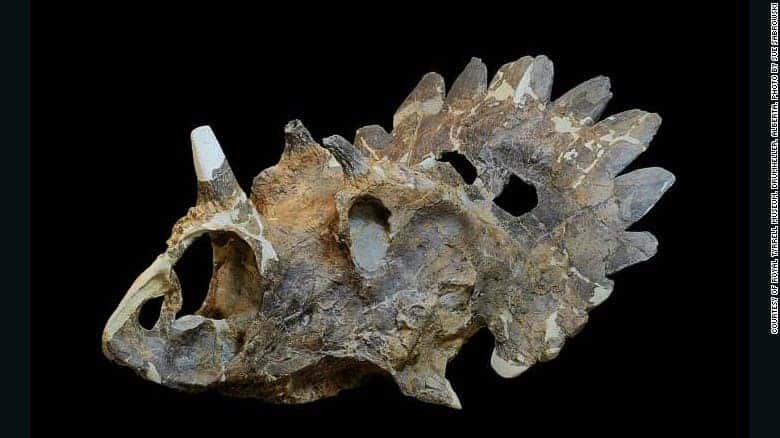Canadian paleontologists discovered a new dinosaur which looks strikingly similar to the famous Triceratops. While the two are very similar in many respects, the new species stands out due to the size and shape of its facial horns and the shield-like frill at the back of the skull. It also had a longer nose horn than Triceratops, and two small horns above its eyes. The radiating frill and pentagon-shaped plates must have made the dinosaur look like a crowned Triceratops. Once you consider this, it’s not surprising how the team named the new dinosaur Regaliceratops peterhewsi (regal is latin for royal, and Peter Hews is the paleontologist who first discovered the fossils).

In fact, it was almost ten years ago that Hews was strolling along the Oldman River in southeastern Alberta when his attention was grabbed by some weird looking bones sticking out of a cliff. It took a lot of careful excavation work and examination, but eventually he and colleagues realized they were on to something big.
“The specimen comes from a geographic region of Alberta where we have not found horned dinosaurs before. So from the onset we knew it was important,” said Dr Caleb Brown of the Royal Tyrrell Museum of Palaeontology in Alberta, Canada.
When the full anatomy was uncovered, we realised it was obviously a new species and an unexpected one.

Nicknamed “Hellboy,” the new dinosaur belongs to one of the two groups of horned dinosaurs known as Chasmosaurines, of which Triceratops is also a member. The other group is called Centrosaurines, which features dinosaurs who went extinct several million years before Chasmosaurines were wiped off the face of the world along with all other dinosaurs during the great extinction at the end of the Cretaceous, some 65 million years ago.
“This new species is a Chasmosaurine, but it has ornamentation more similar to Centrosaurines,” Brown said. “It also comes from a time period following the extinction of the Centrosaurines.”
This suggests that Hellboy may actually be the first evidence of evolutionary convergence in horned dinosaurs.
“This discovery also suggests that there are likely more horned dinosaurs out there that we just have not found yet, so we will also be looking for other new species,” Brown said.
Clearly, Regaliceratops peterhewsi is an important finding for paleontology, but also a special one for Brown, one of the lead authors of the study. After all, the dinosaur helped him propose to his girlfriend in the acknowledgements section of the paper published in Current Biology. In what’s perhaps the most adorable research paper ever, Brown wrote:
“C.M.B. would specifically like to highlight the ongoing and unwavering support of Lorna O’Brien. Lorna, will you marry me?”
Brown’s girlfriend, also a paleontologist, said yes.
“She was a bit astonished, speechless at first. I don’t think she fully comprehended the significance, but regardless of that she said yes, so that’s always a good answer,” Brown said.
Well, good going Brown! That’s the spirit.


